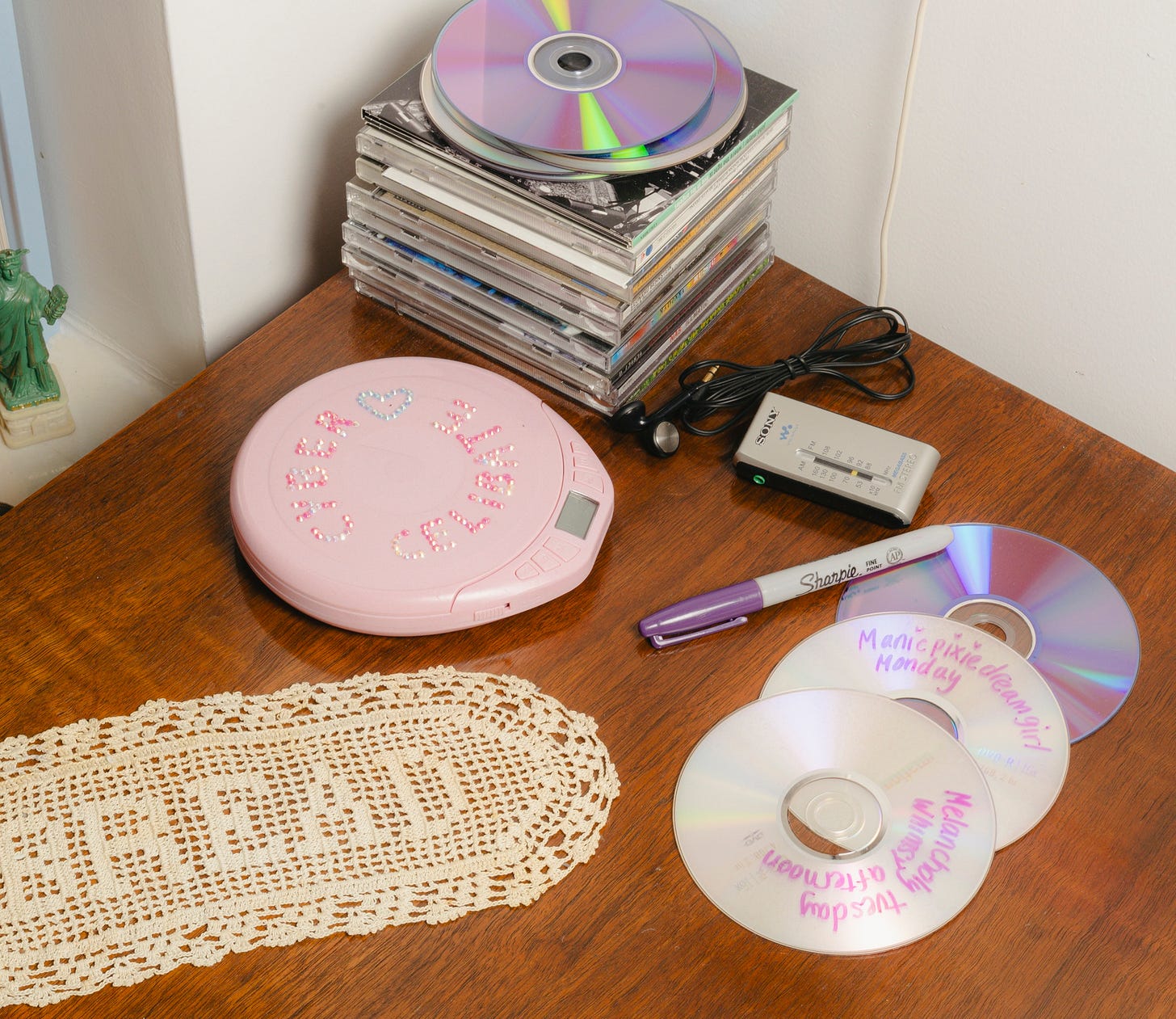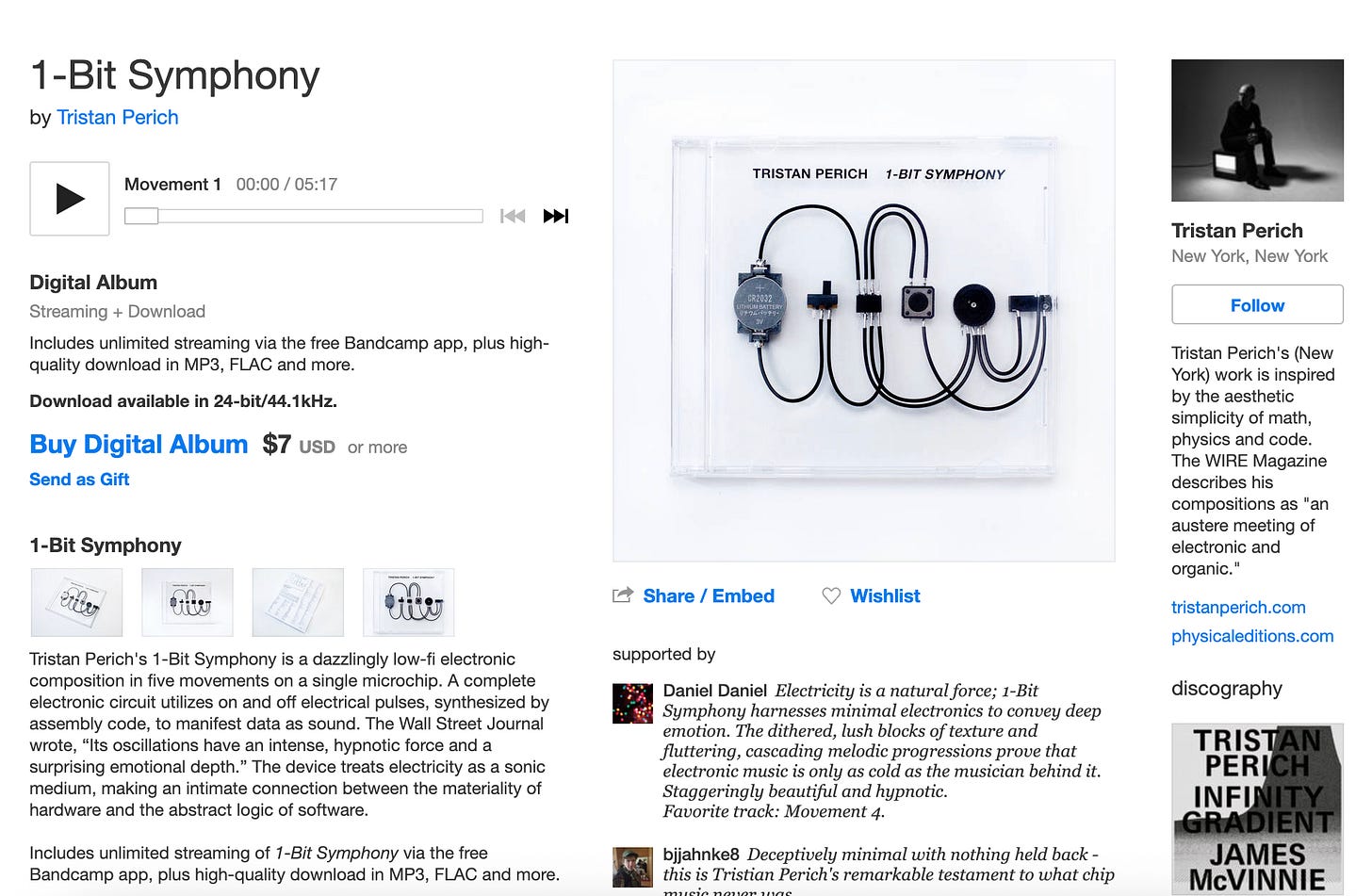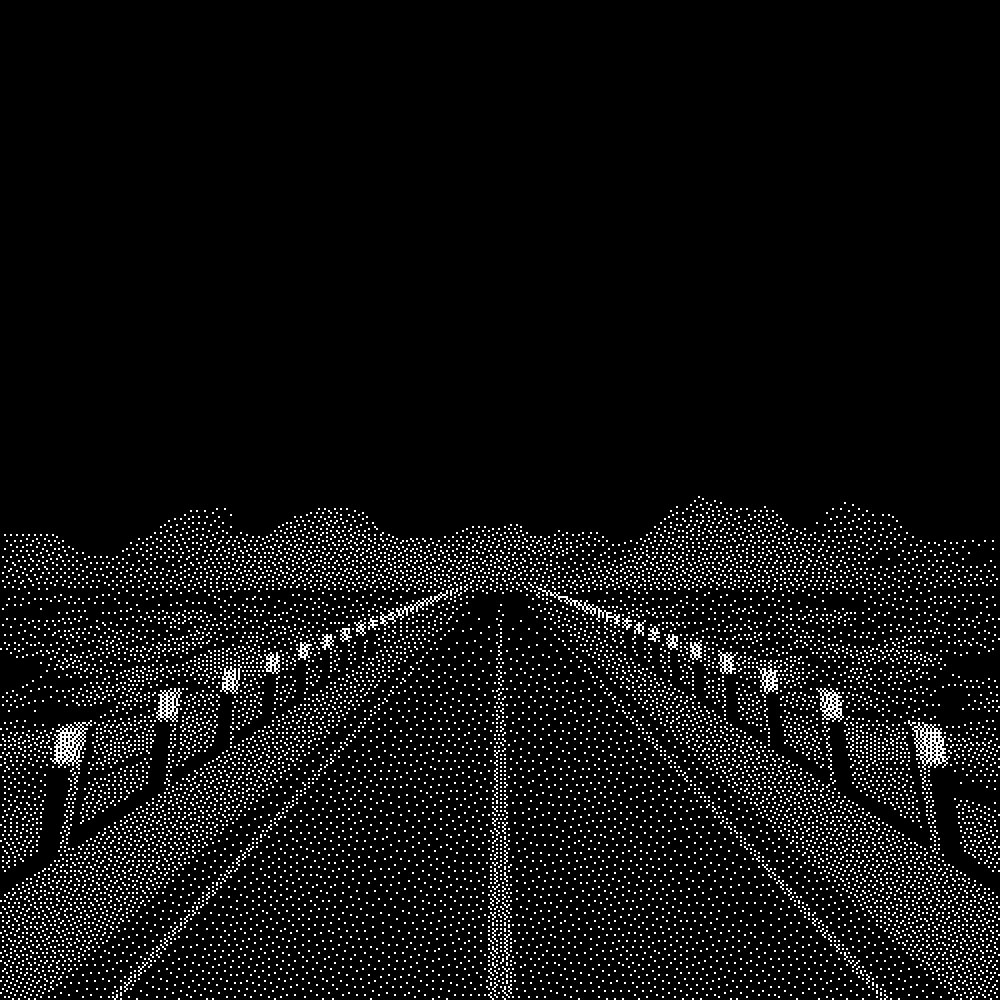I quit Spotify for CDs
For a month and some change, I carried my music every where.
Over a year ago I wrote How To Escape Spotify’s Algorithm for MIT Tech Review. Somewhat recently-ish, I went on Slate’s What’s Next TBD podcast to talk about it. This month, I practiced what I preached.
This week’s post coming to you a little earlier than usual — I’m AFK this weekend to visit family and figured I won’t leave y’all hanging <3 (Photo: Anh Nguyen)
There is an abundance of wonderful guides on Spotify alternatives (see
’s fab take), with equal if not more reasons why new ways to discover —and engage with— music is so critical.A penny for your thoughts:
Spotify CEO Daniel Ek funds defense tech (his VC led the 600-million-euro funding round of European defense tech firm Helsing)
Artists aren’t fairly compensated (artist earns just over $36/ quarter on average)
Discover Weekly never really pushes you out of your comfort zone, according to the guy who not only BUILT the program used to sort Spotify’s genres but also got LAID OFF due to “budget cuts” (he wrote a cool book).
Supporting AI artists…
*** upon reading about criticisms of Spotify, I learned about Payola… more on that later.
I could go on. I’m no different from anyone else. I, too, enjoy pressing the big green shuffle button just to get on with my day — sort of like going on auto-pilot. But perhaps because I know that every time I stream a song, Spotify rips off an independent artist, I decided it was time I started BUYING my music.

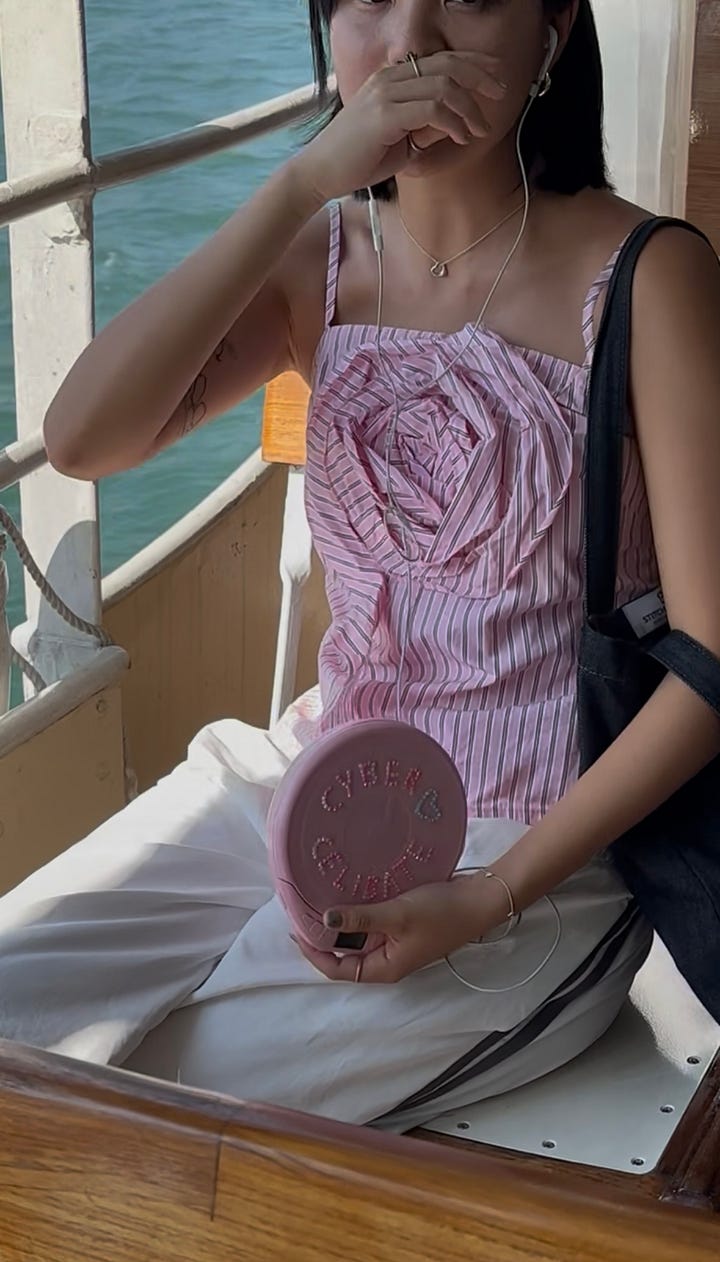


What I gave up: music streaming
How did I cope: CD players and radio stations
Did it suck: annoying but manageable and somewhat refreshing.
The curse of the skip button
Much like getting through the exposition of a novel to really understand its climax, being forced to listen to a CD from start to finish helped me appreciate each song. The skip button on my CD player had stopped working after the first week and I found myself learning to enjoy chronology in music. Crazy concept, I know.
There’s no continuity in the listening experience today. We regularly skip songs, shuffle music libraries, and only hear fragments of TikTok sounds. Rarely, do we ever consider a song in the context of its album. Seldom do we just sit with sound.
Upon describing “Lux” as a dense album that mandates a sequential, undisturbed listen, NYT’s music editor Joe Coscarelli recently asked Rosalia: “do you think you’re asking a lot of your audience?” To which she replied: “absolutely,” before describing her production process as a dopamine detox.
Once in every while, I think about the Japanese audiophile, ‘Rock Grandpa’, who installed his own electric pole to directly access his neighborhood power grid. Apparently it limits electrical interference and minimizes noise.
Rock Grandpa’s dedication to sound quality stands in diametric opposition to our overall degradation of sound. Because video and audio content need to be compatible with so many different formats (phones, tablets, TV screens on planes), sound is often compressed for adaptability — that’s why we all need subtitles now.
Streaming and the rise of short form media has not only diluted each listening experience, it’s also normalized poor sound quality.
The nerve to charge $30 for filler music
The average length of an album is about 74 minutes. Taylor Swift’s average at 140.
A Rolling Stone editor once told me, top music executives intentionally limit the number of hits each album has. Under streaming’s totalitarian rule, you’re meant to release the second best track as a single to stir buzz for the full album.
Each album is intentionally sprinkled with “filler tunes” — tracks that exist to give mediocre variety to intended heavy hitters — all in service of being able to consistently release music and maintain your relevance as an artist.
This model —while profitable for streaming— doesn’t work with CDs. I’d be f*cking pissed if the CD I just spent $25 on only had 2 good songs, especially if I couldn’t skip them (I’m spoiled by Apple Music’s old $0.99/track rule and was a little shocked by how much a CD costs today).
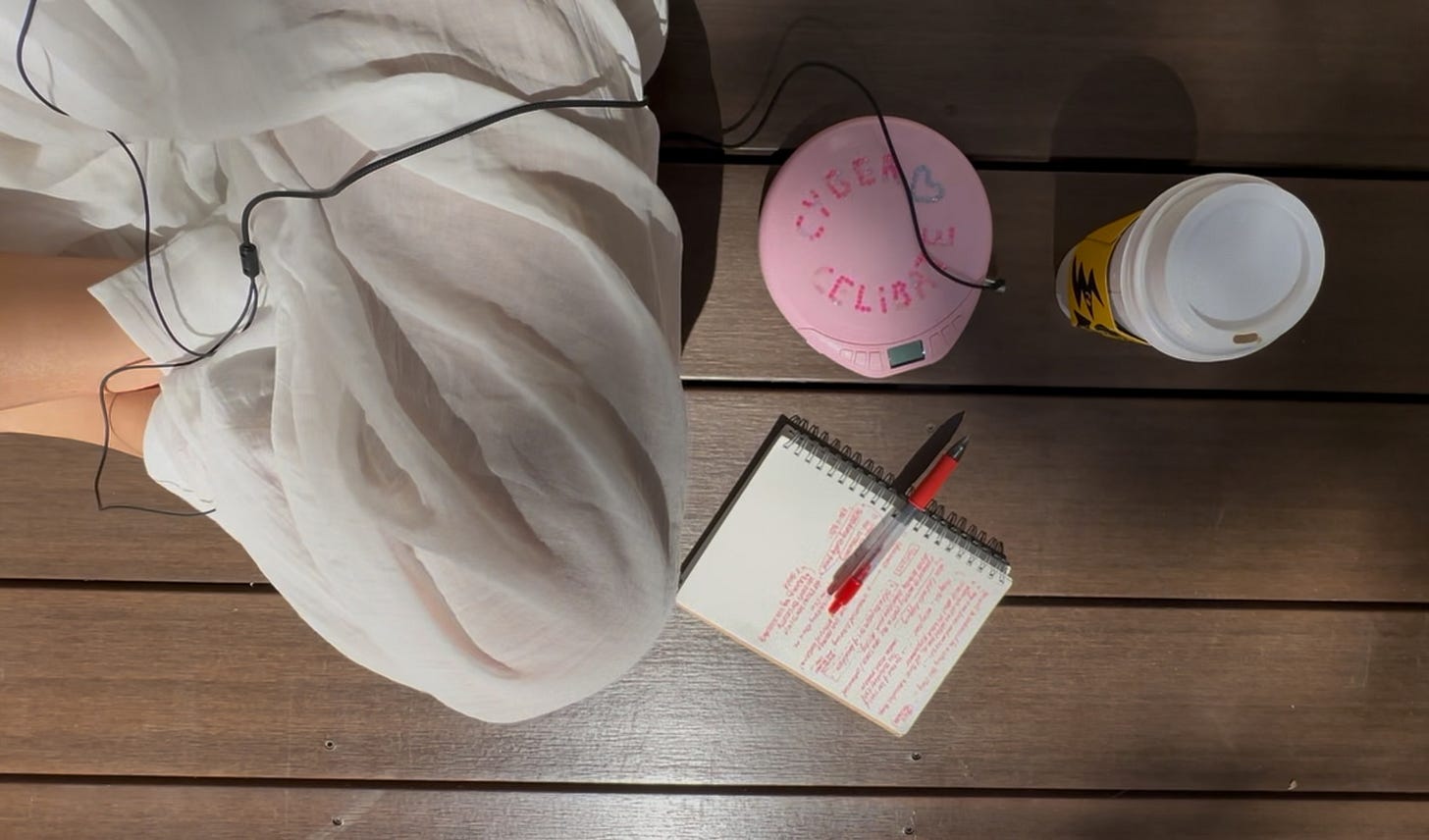
After tiring out the few CDs I had in possession, I started visiting record stores and thrift shops to get absolute steals on old CDs. A real treat, for someone who gravitates toward sounds of the previous decade. There was an element of surprise too, when the CD lodged in its holder either isn’t from the right album or wasn’t properly labeled.
The band that got ‘discovered’ at a charity shop — Back in 2016, someone found an old CD at the thrift store with the words Death Metal scribbled across.
They quickly fell in love with the very hazy, bedroom-pop quality of the album and took to 4chan to locate the original artist. The uploaded audio files quickly went viral and people started analyzing the album’s audio quality and reviewing serial numbers, until someone scraped an old Facebook message board to discover 4 Nottingham teens (band name Panchiko) who burned a couple copies of Death Metal for their friends. Panchiko now has over 2 million listeners on Spotify. A lovely surprise.
The allure of inaccessibility and possession as power
I live in New York. If there’s anything this city’s famous for, it’s exclusivity and sample sales. Access to unreleased music —in the era of pop up concerts and viral teasers— seems to be the crème de la crème.
But with smartphones, unreleased content finds its way to the internet almost instantaneously where shitty recordings turn into TikTok sounds (see Jorja Smith’s “I Run”). There was a time when missing a CD sale forced you to find someone in possession of the new release… and beg them to lend you their copy.
Sharing music used to be so intimate.
People used to camp outside music stores just to get their hands on a copy. Musicians used to play at establishments to promote their music. Imagine if we were as precious about the music we streamed as we were with the music we possessed.
Bring back piracy, handmade mix tapes, and the radio
If you just spent a few dedicated hours rekindling your relationship with our old friend Youtube2MP3, you can find yourself $11.99/month richer and 100% happier (in the absence of ads). According to
, pirating numbers are back up.Back in the day, I would download stand up comedy sets — insane — and listen to them on repeat. I also loved pirating full concerts, mostly because it took less clicks to get more songs. Because commentary would be baked in between each song, consuming music felt more like an experience. There was more context, even if you had to listen to the same introductory monologue every time.
Of course, the music business has dramatically changed since 2008. With almost every music streaming platform ripping artists off — and having to either purchase or download music again being sans streaming — I found myself getting really into
.They have everything! Joining their live streams and listening parties, I felt closer to the people who were both curating and producing music — each artist’s page radiated HTML energy and clicking through the profiles of their patrons felt personal.
Purchasing songs/CDs/cassettes (surprisingly, many artists offer) from the artists themselves was just the cherry on top. I know Bandcamp isn’t new, but the notion of directly supporting artists feels refreshing (yet distant) in today’s creator economy.
Could there be hope for independent artists? Mindy Seu’s financial experiment with Cyberfeminism Index (published by
) will show us the way.Going analog is expensive
The costs of this month-long experience added up to roughly $87.45 — a staggering $75.46 more than what I would’ve otherwise paid being on Spotify.
But the physical constraints that came with acquiring music pushed me to be more intentional with both discovering and supporting new artists. The money I spent pushed me to be more precious with what I’m listening to.
We forget that the one great thing about the internet is that in just a few clicks, you can explore the world of Finnish Math Rock without ever having to step foot in Finland. Streaming platforms shouldn’t be responsible for true music discovery. We should think of it like Maps — a way for us to get to where we want to go.
… what should I quit next?
Hello friends! I recently enabled paid subscriptions to support some of my more rogue ventures in cyber celibacy (typewriters, building a printing press… more to come).
I also created a Snail Mail Membership, where (in true neo-luddite fashion) I’ll physically mail you this newsletter on a bi-monthly basis. For the first dozen snail mail members, I’ll handwrite your first letter <3



